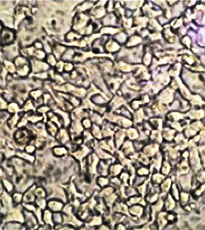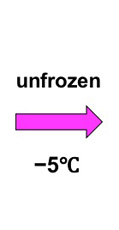(12/12) An AFP solution is easily frozen. Hence, the appropriateness of the term "antifreeze" has been questioned. However we still think that AFP works as an antifreeze. Our speculation is that tiny embryo single ice crystals generated in supercooled water become a super-saturation state to trigger the freezing. If it is true, AFPs should bind to such embryo ice crystals to keep them small (they are less halmful to the cells), thereby preventing a formation of such super-saturation state (= antifreeze). Rat insulinoma cells (RIN-5F) preserved with an insect-AFP-containing UW-solution exhibited 53% of high survival rate after 20-day "unfrozen" preservation at -5 deg C [1]. This might be ascribed to such mechanism. We believe that more advanced studies will clarify "antifreeze" function of AFP. (->page1) (->home) # Please note that "Ice-binding protein (IBP)" is a word employed for the IBP conference to cover AFP, ice-nucleation protein (INP), and ice-growth modifiers (e.g. PVA) (revised on 31-AUG-2022). |
|





